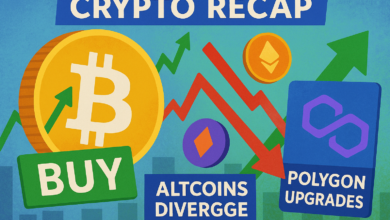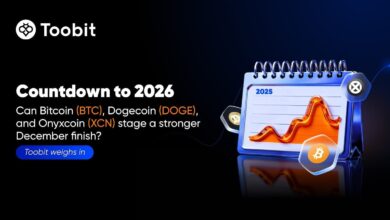Maximizing Investment Opportunities in the Crypto Market: Key Insights for Success
Introduction
The cryptocurrency space remains one of the most dynamic and rapidly evolving financial ecosystems of our time. Misunderstood by many and often dismissed as speculative, crypto markets have consistently demonstrated their potential to disrupt traditional finance, create new economic models, and provide unparalleled returns for strategic investors. While mainstream narratives focus on volatility and regulatory ambiguity, seasoned contrarian investors adopt data-driven approaches to identify early-stage opportunities rooted in real innovation. As momentum builds around institutional adoption, and global regulatory frameworks begin to mature, discerning between speculative hype and technological progress becomes increasingly crucial. Understanding adoption curves, utility-driven demand, and project fundamentals is essential for long-term success.
In this article, we dive deep into the strategies and indicators successful investors use to profit from market dislocations and overlooked assets. Real-world examples, from BNB’s rise to Ethereum’s developer dominance and cross-chain innovations like Uniswap and Solana, offer actionable insights for those willing to dig below the surface of market noise.
Identifying Growth Potential: Case Study of BNB Listing on Coinbase
One of the most consequential developments in BNB’s price trajectory was its eventual listing on Coinbase. Until that point, Binance Coin had been largely confined to the Binance ecosystem, which prompted ongoing discussions about centralization risks, exchange dependency, and limited accessibility for U.S.-based investors. Despite this, BNB maintained robust utility within the Binance Smart Chain (BSC), supporting hundreds of decentralized applications and facilitating billions in transaction volume.
For contrarian investors, the Coinbase listing served as a validation point. It signaled not just regulatory tolerance but also institutional recognition of BNB’s ecosystem value. Leading up to the listing, market participants had the opportunity to analyze BSC usage metrics — including wallet activity, smart contract deployments, and developer contributions. These often-overlooked indicators provided early signals of a robust and growing network. Post-listing, BNB experienced significant price appreciation, rewarding early adopters who could look past regulatory fear, uncertainty, and doubt (FUD).
Furthermore, the BNB ecosystem introduction of token-burning mechanisms and increasing utility across DeFi, GameFi, and NFT platforms solidified its status beyond a mere exchange token. Burn events directly reduced supply, creating a deflationary dynamic that boosts value over time. Ecosystem growth reflected strong network effects, wherein increased user activity and developer engagement compounded token utility. Historically, these networks mirror prior trends seen in assets that eventually outperform the broader market during bull market cycles.
Leveraging Market Trends: Ethereum’s Developer Influx
Ethereum remains the flagship smart contract platform, not simply because of first-mover advantage, but due to its vibrant and active developer community. Developer activity is a leading indicator of network sustainability. Unlike short-term price movements, strong developer ecosystems tend to build over time, feeding progressive infrastructure improvements, dApp deployment, and ongoing feature innovation. In fact, GitHub repositories, Stack Overflow contributions, and the rise of Ethereum hackathons provide quantifiable evidence of Ethereum’s dominance in developer mindshare.
Despite criticism surrounding gas fees and scaling delays, developer enthusiasm has remained high. The transition from Proof-of-Work to Proof-of-Stake during the Ethereum Merge, implementation of EIP-1559, and ongoing work on Layer 2 scaling solutions like Arbitrum and Optimism show Ethereum’s ability to evolve without fragmenting its community. The true strength of the network lies in its capacity to integrate feedback, execute major upgrades, and continue to attract new developers.
Ethereum’s developer lead translates directly into growing user adoption of decentralized finance (DeFi), NFTs, and Web3 applications. By contrast, competing blockchains that initially draw hype but fail to maintain developer momentum eventually lose relevance. Investors tracking Ethereum’s development pipeline — including rollups, sharding, and zero-knowledge proofs — are better equipped to evaluate its long-term value. Those who ignored negative market sentiment and focused on Ethereum’s fundamentals often benefited from long-term gains, especially in alignment with broader movements in Bitcoin price cycles.
Seizing Strategic Opportunities: Predicting Market Shifts
One of the key advantages in crypto investing lies in identifying emerging trends and anticipating market shifts before they become obvious to the broader investor base. Sophisticated investors use advanced blockchain analytics platforms like Nansen, Glassnode, and Dune Analytics to gain real-time insights into on-chain activity. This includes detecting wallet clustering, unusual volume spikes, and large-scale token minting events — all precursors to potentially significant market movements.
A classic example is the historical correlation between Tether (USDT) minting and bullish price movements. Sudden increases in stablecoin supply, often initiated by institutional accumulation, have preceded major bull runs. Monitoring whale wallets — particularly accumulated holdings before project announcements or launches — can provide valuable cues about upcoming sentiment reversals or market breakouts. While retail investors often chase trends too late, proactive data analysis offers a competitive edge.
Another strategic opportunity lies in discounted yet fundamentally strong assets during downturns. Bear markets prune overleveraged projects and memecoins while allowing legitimate protocols to strengthen their foundations. As markets recover, capital tends to flow back into resilient ecosystems that survived previous drawdowns. This period offers fertile ground for high-conviction plays, especially in Layer 1 chains, cross-chain infrastructure, and emerging sectors like AI and privacy coins, reinforcing the importance of building a diversified, conviction-based portfolio during a crypto bear market.
Embracing Innovation: Uniswap’s Integration With Solana
Decentralized exchanges (DEXs) have become cornerstones of the crypto ecosystem, and Uniswap leads the charge as one of the most influential DEX protocols on Ethereum. However, the landscape is shifting towards a multichain future where blockchain interoperability becomes the norm rather than the exception. Uniswap’s recent expansion to Solana represents a pivotal moment that underscores this dynamic transition.
Solana offers significant advantages in terms of transaction throughput and cost efficiency. With sub-second finality and minimal fees, it addresses scalability challenges Ethereum continues to tackle. By integrating with Solana, Uniswap not only accessed a new user base but also took a step toward protocol resilience by diversifying across chains. This integration benefits both ecosystems — Uniswap gains from Solana’s performance layer, while Solana gains prestige and functionality with a highly trusted DeFi protocol.
Forward-looking investors monitored this integration through open forums such as Uniswap’s DAO governance proposals and Solana Foundation grants. These early signals provided time-sensitive opportunities to accumulate SOL and UNI before the market adjusted pricing accordingly. Understanding the strategic reasoning behind protocol expansions and examining developer collaboration often reveals high-reward opportunities before they become mainstream knowledge.
Conclusion and Recommendations
The most successful crypto investors consistently apply long-term thinking, data-backed research, and a forward-looking mindset to their strategies. By identifying undervalued protocols, monitoring on-chain data, and staying proactive in tracking developer and governance activity, they position themselves for asymmetric returns.
- Stay Informed: Leverage real-time analytics from on-chain tools and prioritize verified information over speculative social media noise. Platforms like Token Terminal, Messari, and DefiLlama can provide reliable context.
- Be Strategic: Resist the urge to follow short-term trends. Construct investment theses with a 12-to-24-month horizon, and use accumulation strategies such as dollar-cost averaging during periods of fear and low sentiment.
- Stay Adaptive: Keep your portfolio diversified across themes like DeFi, NFTs, Web3, cross-chain infrastructure, modular blockchains, and privacy solutions. Rebalance positions as innovation cycles evolve and scalability gaps close between networks.
Ultimately, it’s the contrarian approach that often offers the greatest rewards. Contrary to popular belief, top-performing crypto portfolios are rarely built on hype or herd behavior. Instead, they’re developed through patient analysis, ecosystem familiarity, and a tolerance for volatility balanced by conviction. By focusing on value drivers over narratives, investors move from speculation to strategy — a critical distinction in navigating the wild yet rewarding world of crypto investing.
Source link





